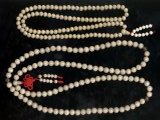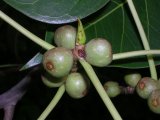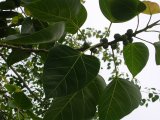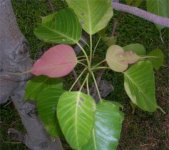Submitted by zhenliang on
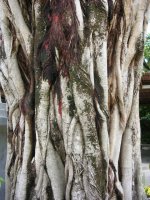
The Bodhi (The Pipphal)
The ripe fruit is used to treat biliousness and heart diseases. It also relieves constipation. The young bark is used in binding bone fracture. The juice of the bark is used as a mouthwash. The root is used for rheumatic pains and the seed is used to treat leprosy.
Apart form medicinal uses, the leaves are a good fodder for elephants and cattle. The wood is used for making packing cases, yokes, spoons, bowls and rosary. The latex is used as a sealing wax to fill cavities.
This tree has two common names. This Bodhi tree that is sacred to the Buddhists and the Pipphal tree. The Lord Buddha sat under a Pipphal tree and gained Enlightenment. After that, this special tree is called the Maha Bodhi tree. This tree is very sacred to the Buddhists. One can always find a Bodhi Plant in most Buddhist Temples. All Bodhi trees are planted from cuttings or seeds of the descendents of the original Maha Bodhi that Buddha set under and attained his Enlightenment. Trees that are not a descendent of the Maha Bodhi are called Pipphal trees. Scientifically it is the same tree, and so they contain the same chemical compounds. Medically they are the same.
This is actually a huge tree that can grow up to 30 meters high. However it can be made into a bonsai and retained potted. A very hardy and elegant plant with heart shaped leaves and a long leaf tip. The very young shoots are pinkish. The Ananda Bodhi tree in Nothern India is over 2550 years old and is one of the oldest trees in the world.
Scientific name: Ficus religiosa Linn.
Common name: The Bodhi Tree (The Pipphal Tree),
Chinese name: Pu Ti Shu
Thai name: Ton Bo
